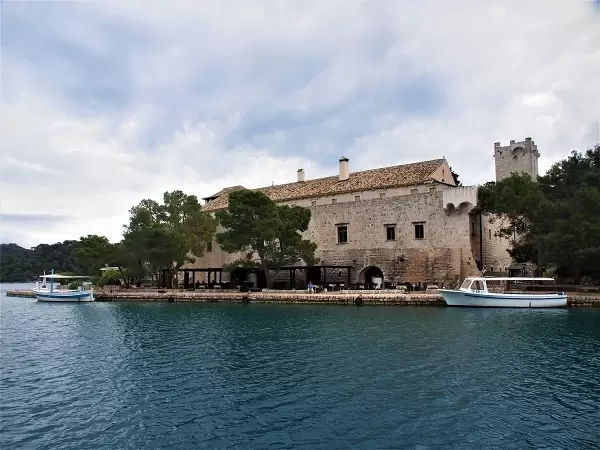
I first encountered Croatia in 2010 on a river cruise only seeing the parts that were war-torn from the 1990s.
Thankfully my curious nature was peaked and my husband and I made our way back in 2013 to explore more of the stunning Adriatic Coastline. We drove from Venice into the northern region of Sibenik before making our way stop by stop to Dubrovnik. At that time we weren't overly impressed with Split but suffice to say we did not take our first impression as our last.
This article is not about a land journey but an Adriatic Cruise that I was fortunate to embark upon in May 2019. As a Journalist, I wrote a little of the journey but not in-depth. Croatia on this voyage was about Photo Journalism, telling the story in pictures and as you will see they conjure up whimsical notions and descriptions so stunning is the setting.
Our journey ironically began in Split and I am so glad that it did. Remembering places I had been and revisiting those and more, I looked with different eyes. Nothing had changed except maybe a few more restaurants along the boardwalk. What had changed I realised was me, I now looked with more open eyes at everything not just 'oh another ruin'. That is the funny thing about travel and time, we change but not so much the destination. I would encourage you to spend at least two nights in Split before undertaking your cruise.
 The Adriatic coastline is spectacular and maybe a 7-day cruise could just be a small part of the Croatia adventure.
The Adriatic coastline is spectacular and maybe a 7-day cruise could just be a small part of the Croatia adventure.
For me, it was insightful, not quite surpassing Plitvika Lakes inland but the beauty and eloquence of the islands is something that I will cherish always. Our first island is that of Brac, the largest island in Dalmatia and the township of Bol. The Croatian people found their way to Brac in the 7th Century and have been there ever since. Bol is renowned for her beach Zlatni Rat and as stunning as the view may be, it certainly is a beach for Europeans who look for different qualities. I fell in love with the restaurants, the incredible street art and of course the history. Their little harbour is alive with small yachts and fishing boats with shops containing designer items at very reasonable prices. Walk to your heart's content stopping into the oldest church, that of St Anthony built in the early 16th century. Surprisingly wine tasting down by the harbour is a highlight of our day. Brac has been a part of the bronze and iron ages giving you an insight into just some of her intriguing past.
As we rejoin our host on the Katarina Line cruiser, the guests seem to be buzzing with excitement over such a fulfilling day. Dinner chatter is filled with stories of the day's discoveries interspersed with food and delectable wines. Sleep certainly comes easy by the end of the evening.
By now we had fallen in love with the scenery then along comes the island of Vis.
The Adriatic has so many gems, so many jaw-dropping places and so many historical escapades. Once a renowned fishing port, it is mostly known now for agriculture and tourism and it is easy to see why. The island's caves have to be seen to be appreciated, the deepest azure and cobalt waters swirl gently with the tides to bring a sense of extraordinary tranquillity. Another moment of reflection on the inclusive beauty of a country one should not take for granted.
 Hvar - sounds like hoorah, so I will never forget the name.
Hvar - sounds like hoorah, so I will never forget the name.
The island is quite famous for some odd reasons, the first being where Prince Harry had his stag party before wedding Megan Markle. The second is the large fertile coastal plain yielding fruit orchards, lavender farms, olive groves and vineyards topped off with freshwater springs. The harbour is full of yachts from the modest to the well to do but the theatre and clock tower built of a light pepper coloured sandstone are certainly part of the attraction from a cultural perspective. The lavender oil produced here is some of the richest in the world. It is known for never losing the scent no matter how old. Visit the street markets and you will be overcome by all things lilac.
As we farewell Hvar with the sun setting, it is easy to feel a strong sense of fulfilment over a day well spent sailing in the wake of the early explorers, only on an airconditioned boat.
There is no shortage of spectacular moments on this cruise and our next port of call, the island of Korcula, has me thinking that I could very well pull up stumps and call it home. Archaeology has provided a history of the very first beginnings of Mesolithic and Neolithic people before the Balkans settled around 1000 BC. So what is the importance of this information and that of the Greek colonists from Corfu who set up home in the 6th century BC? It paints a vivid picture of the island today as a mix of cultural ties envelope every building and restaurant. Some of the must-sees for those interested in history are the alleged Venetian birth house of MARCO POLO, St Mark's Cathedral and the Korcula Cathedral which was my favourite from an historical and architectural perspective. It can be seen in the lead photo on my post. Take time to dine at one of the many establishments on the boardwalk as you watch the sun go down over the Adriatic Sea. 
As a new day dawns, we are introduced to yet another spectacular view, this time on the island of Mljet - pronounced Milyet.
I was very keen to try their red wine for which they are renowned along with locally grown olives and goat's cheese. While not necessarily to everyone's taste, the cheese is certainly one that goes down well with the full-bodied wine. Despite being covered in a dense Mediterranean Forest, the island could easily be straight out of Robinson Crusoe. While there are no apes swinging through the trees, the deep emerald canopy set against the sandstone coloured rock is a living painting of epic proportions. There is abundant marine life surrounding the island, a testament to the sustainable nature and beautiful beaches for locals and tourists to enjoy.
There are two salt lakes on Mljet and one in particular, Veliko Jezera, is where you will find St Mary's ancient Benedictine Monastery dating back to 1151. Given to the Benedictine Monks of Puglia in Southern Italy, the church had renovations and extensions in the 15th and 16th centuries. The Monastery is surrounded by electric red poppy fields which sway in the gentle gentle breeze as if dancing to a song of their own making. The monks resided in the monastery until 1808 when they were banished by Napoleon Bonaparte, you cannot get much better history. If you would like to know more I would suggest looking at mljettravel.com where you will find some of their amazing pictures of what you can expect.
 |  |
Our very last stop before our coastal cruise through the night to return to Split is the famous landmark and city of Dubrovnik.
A landmark for many reasons, one of which is well known to the lovers of Game of Thrones. Walking through the archways of the old city transforms you in time and memory if you have watched any of the series. There are 16 locations were used including Lovrijenac Fort which became the Red Keep and the west pier became Blackwater Bay, the Dominican Monastery and Sponza Palace all featured in many of the scenes. But I don't want to spoil the surprises, you just might have to visit for your own scouting walk. Dubrovnik has its own International Airport located at Cilipi with buses connecting it to the city on a regular basis. Originally inhabited by the Illyrian people in ancient times, like everywhere on the coast, you will find a hypnotic fusion of countries in both food and architecture. To close the journey you simply must walk the walls of the old town. You can do this is a guided tour or simply climb the stairs (entry cost) and take your time meandering along the winding path taking in both the rocky outcrop outside the walls to the quaint picture book homes where people still reside to this day. It can be intriguing to check out their washing - if you are so inclined.







